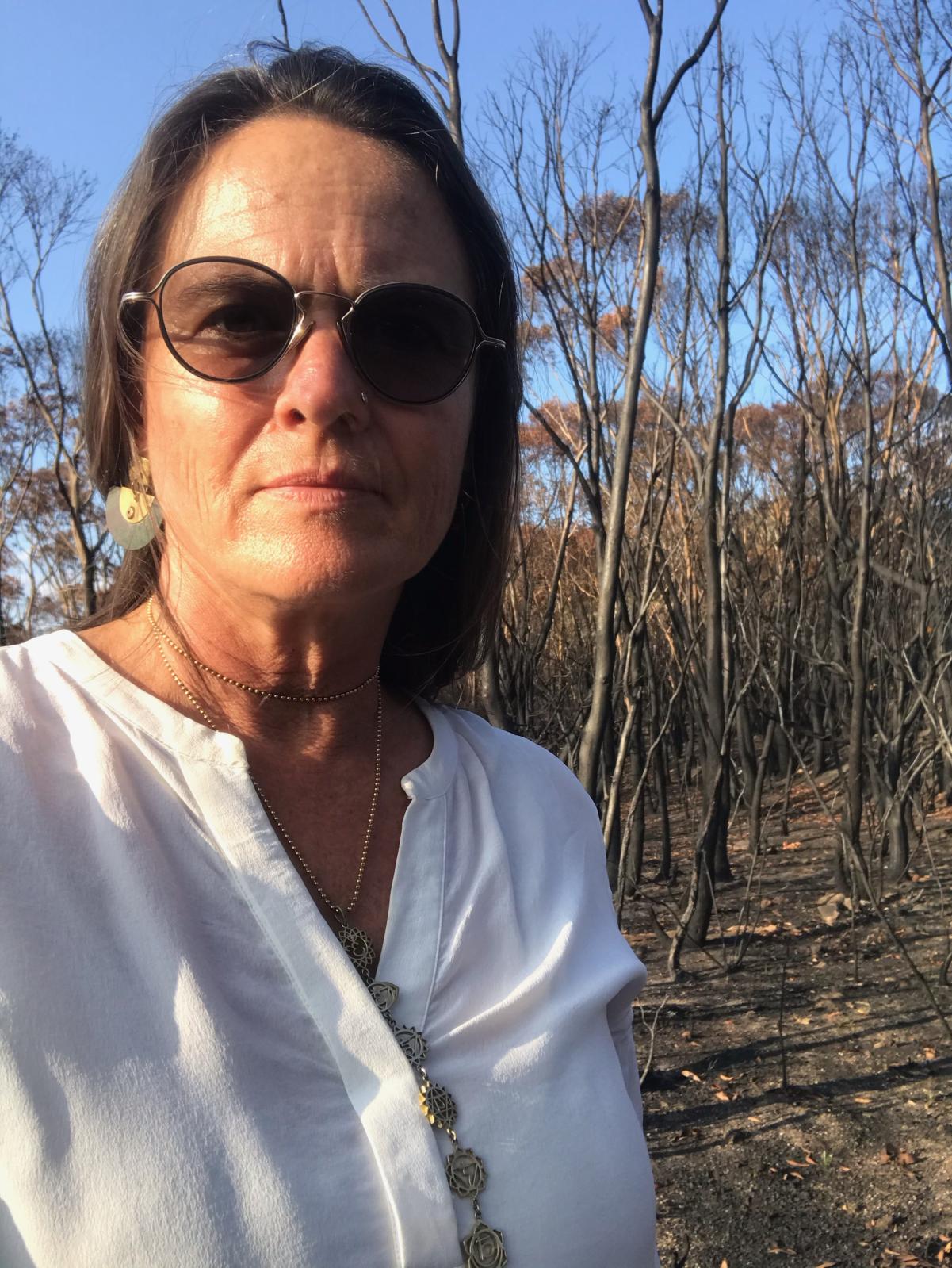“A Disaster of Water Privatisation”: An Interview With Water for Rivers’ Tracey Carpenter

South Eastern Australia is facing its worst water crisis in living memory. In NSW, rivers that no one remembers having run dry in the past, have ceased to flow. And there are dozens of regional towns staring down the barrel of Day Zero, which is when there’s no more water left.
Regional centres along the Barwon-Darling river system, such as Menindee, Walgett, Bourke and Brewarrina have feared running out of water since early last year. And other towns – like Bathurst, Orange and Dubbo – are now looking towards a similar fate.
It’s First Nations communities that are really bearing the brunt of the water crisis, as 60 percent of Aboriginal people living in NSW are located along the Murray-Darling. And their way of life has been intricately linked to these threatened waterways for tens of thousands of years.
But, while government likes to talk about the devastating drought the nation is going through, grassroots activists assert that this is no drought at all, rather it’s very much a human caused water crisis born out of policy, hoarding and mismanagement.
For the benefit of corporates
The SA Royal Commission into the Murray-Darling Basin identified floodplain harvesting as playing a major role in water insecurity. And the Australian Institute outlined last month that in northern NSW harvesting continues to be “unregulated and unmeasured”.
This captured water is being stored in privately-owned dams. The institute further revealed last October that around 20 to 30 such dams have been constructed along the Murray-Darling over recent years, and they’ve been heavily taxpayer subsidised.
“The recently constructed dams in the Murray-Darling Basin do not help drought-stricken towns, struggling small irrigators or the wider public,” the Dam Shame report explains. “They are built with taxpayer money on private land mainly for the benefit of large corporate agribusiness.”
And as the ABC’s Four Corners exposed back in mid-2017, there’s been serious issues around the theft of water from the river system. And this unlawful pumping and tampering with metres has seen cotton growers illegally using water for their benefit, whilst towns have gone without.
Management in crisis
The Murray Darling Water Plan was established in 2012. This agreement is between the federal government, four state governments and the ACT. And it’s supposed to sustainably govern the use of these waterways, which are the lifeline for numerous towns throughout five jurisdictions.
However,last month, NSW deputy premier John Barilaro threatened that his state would pull out of the plan unless major changes are made. And now the federal government is withholding millions of dollars in funding from NSW, as it failed to complete and submit required water resource plans.
Sydney Criminal Lawyers spoke to Water for Rivers spokesperson Tracey Carpenter about the regional towns that are currently facing Day Zero, why privatising rain is not a good idea, and the problem with prioritising corporate needs over all others.
Firstly, the water crisis in the Murray-Darling Basin is something people in the city started becoming more aware of following the large fish kills along the Barwon-Darling river system last summer, and then with towns starting to run out of water.
Of late, the crisis has been overshadowed by the severity of the ongoing bushfire catastrophe. Tracey, how would you describe the extent of the water crisis in NSW at present?
It’s disastrous. The bushfire crisis and the destruction of the rivers are linked. People are now wanting to study how the impact of the depletion of rivers is hitting aquifers and drying the land.
So, the removals of water has had some flow on effect to the bushfires. It’s a twin dynamic between climate change and the mismanagement of water. They’re all very much linked.
Over recent months, there’s been a lot of talk about Day Zero, which is a time when towns could run completely dry. It recently came to light that the NSW government has evacuation plans for up to 90 regional towns. And that includes your former town of Bathurst.
What’s the likelihood at present that certain towns actually reach Day Zero in the coming months?
There was a report on the ABC today saying the list has been shortened to 55 towns facing Day Zero. And I imagine that’s due to the recent rainfall.
But, the Murray Darling Association has said that none of those inflows have impacted the water catchments that they have authority over. So, the western crisis is still very much as it was, and fast accelerating.
Queensland has been more relieved by recent rains. But, certainly not NSW. And I’ve read that in those towns where water had fallen that the land was so dry that it only increased dam levels by 1 percent, which is two weeks of water consumption.
So, it’s made little impact, and the crisis is still very much in play.
In mid-November, as the Newcastle chapter of Water for Rivers was forming, you spoke about the consequences that water privatisation is having on the western river systems. What role does privatisation play? And what are its impacts?
When you look at it, they’ve privatised rain, which is a pretty horrendous outcome. They’ve turned rainfall into a market.
Prices have been driven sky high. The government last paid $2,700 a megalitre for a deal it did with EAA, which was the company set up by Angus Taylor, the current energy minister.
So, this has priced small to medium farmers out of agriculture. The only way they can turn a buck is to sell their low security water licences.
The cost of water doesn’t justify them farming. The only people that can afford water now are the large-scale corporate irrigators and the mines.
And that’s having an impact on catchments and inflows to dams, which are the water supplies of those towns that are all facing Day Zero. It’s not only a drought, although the government tends to talk about it like it is.
The fact is that inflows and the water being captured in floodplain harvesting aren’t getting into the water systems.
It’s being held in private dams by speculators, who are driving it up to the highest price. So, it really is a disaster of water privatisation.
So, water is actually being harvested by people who are simply holding onto it to sell?
Yes. And an example of maladministration, is that the federal government stepped in to set up a fund to improve water efficiency. It was two-pronged.
The first part was they were going to insist that there were flows into the rivers for the environment: to keep the rivers flowing.
That was to be achieved through water buybacks, which have been undertaken by the states and federally.
Many of those have been quite questionable in what was actually bought, with very little water resulting in the river systems.
The second part was they set up a fund for water efficiency that was largely taken up by private water licence holders, who built private dams, particularly in the southern catchment.
They’ve captured most of the flows from 2017 and effectively privatised that water. That hasn’t gone into the rivers and it hasn’t gone into the catchments to fill the public dams, which provide the towns with water.
And the rivers are running dry, whilst there are people sitting on stores of water?
Yes. There’s a lot less water than when the plan was designed, because the plan was designed ignoring the climate science warnings that there were going to be much lower rainfalls and much higher temperatures in South Eastern Australia.
There’s also been accusations regarding water theft. In your understanding, how does the illegal sourcing of water factor into all of this?
Massively. But, there have been very few prosecutions. Four Corners exposed some of the thefts in the northern catchment.
They also showed the state government’s policing of water extractions to be completely inadequate. They had a handful of officers supposedly policing the whole state and checking metres, which were found to be tampered with, as in, turned off.
There are prosecutions as a result of that investigation. And one of them starts in March. It’s of a big cotton grower in the northern Darling.
Water for Rivers formed around the state following the Yaama Ngunna Baaka Corroboree Bus Tour, which was organised by Bruce Shillingsworth last September.
It actually formed before that. It took a number of actions and was part of the movement that was supplying donated water to the western towns. That’s been running for over a year.
The group became aware of the crisis that was hitting, particularly the Aboriginal communities, which have been left out of all discussions and pretty much abandoned.
It was a twin-pronged approach. That movement started delivering water. And Water for Rivers set up as more of a lobbying group to highlight the policy failures and maladministration, as well as what could be done to right the situation.
As fast as any water hits the catchments, it’s extracted by massive pumps and dragged out of the system into private dams for the profit of water speculators. That’s why Water for Rivers is taking the campaign side of the issue forward.
And lastly, Tracey, the NSW Liberal Nationals government is notorious for putting the needs of corporates before the environment.
How would you describe the government’s role and response to the water crisis? And what sort of steps do you recommend it should be taking?
It’s abysmal and corrupt. One of the most criticised decisions was that Katrina Hodgkinson altered the water sharing program for the Barwon Darling rivers.
It changed the high security class water rights, and it allowed the big corporates to effectively pump the river even in medium to low flows.
So, they get their high security licence, which means they get their water first, and no other needs are recognised under that correction to the water sharing plan.
Water sharing plans are drawn up with the communities making allocations for all users. So, she effectively, overrode a long and hard negotiated agreement to benefit the high security licence holders, which are the big corporates.
Everybody else in this drought situation has missed out. And there are questions over the legality of the minister overriding that system of negotiation and agreement.
It’s now developing into a full constitutional crisis, because NSW is talking about withdrawing from the plan, but there’s never been an agreement between the states before that’s involved one of them withdrawing from it.
So, it’s really undermining everything right up to the constitutionality of the Water Act. It has massive legal ramifications.
It came out today that part of that agreement is that all the states submit their water agreements from each catchment area. There’s twenty in NSW. And the state has failed to audit them, or present them to the federal water minister, David Littleproud.
The minister has given them another extension. But, he said if he doesn’t get the water sharing plans by April, the federal government will step in and take control.
However, under the Constitution, the states have control of water. So, its real brinkmanship going right back to Federation.








